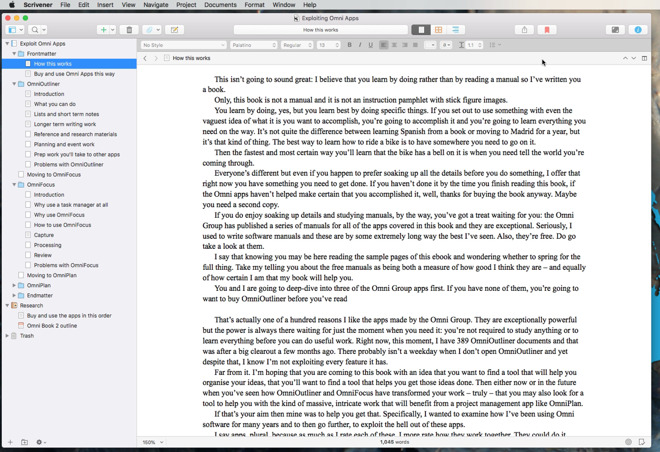

The first card is yellow as I selected that color, the second is grey – the default color for a card – and the third is white as that’s the currently-selected one.
#Scrivener for macbook air plus
Once you’re ready for the next card, you just tap the plus icon and do the same thing again: either choose your own title or select one of the presets, then type your scene synopsis. I then set about planning the world’s most clichéd rom-com plot by writing a two-sentence synopsis for the scene. I accepted the hint of starting with Act 1 and an Inciting Incident, and was so pleased to see non-monochromatic colors that I chose to make this card yellow. These are a pretty helpful way of ensuring that you cover off some of the essentials in your planning, and in providing a guideline structure.
#Scrivener for macbook air free
Tap in the title area of the card and you’re free to enter your own title, but you’re also prompted with a selection of preset ones. When you tap New to create a new document, you’re asked for a title and then get a title page and one blank card. It also made for a rather unclear menu system, but more of this later. Tastes vary, of course, but personally I found this a bit oppressive in an app that’s all about fostering creativity.

So on the homepage of the app we get skeletal typography for the name, a skull icon and a color scheme largely comprising black and grey. The developer has run with the ‘skeleton’ part of the name and tried to make the look & feel reflect that. I have to say I’m not a fan of the aesthetics of the app. The app runs on both iPad and iPhone, but I suspect it may be rather cramped on an iPhone. You’d simply need to cut-and-paste it into the document once you export to Scrivener.

I’d ideally like to be able to double-tap on a card to open a document, just as I can in Scrivener, but then I guess what we’d have then is, well, the iPad version of Scrivener. There doesn’t, however, appear to be any limit on the amount of text you can have in the synopsis area of a card, so if you do get carried away and find dialogue springing immediately to mind, there’s nothing to stop you writing it in the synopsis area. You get a corkboard, and you can title the cards and enter a synopsis, but that’s it: there’s no way to do any of your actual writing in the app. In Scrivener, you can then double-click a card to open up a document to do your actual writing – and that’s the first thing to note about this app: it’s a pure planning tool. Typically, when planning a novel or screenplay, each card will represent one scene. Each card can have a title and a synopsis of what happens in that section. I was thus really interested to see an iOS app that not only provides a very similar corkboard view, but which can export and import to and from Scrivener …įor those not familiar with the corkboard concept, what you have is a virtual board with a set of index cards. At the planning, stage, though, I love the corkboard interface. I’ve used PlainText with a Dropbox sync as a way of working on Scrivener projects on my iPad, and that works well enough at the writing stage. The TL DR version is that I wouldn’t dream of attempting to write a novel in anything else. My only real grumble is that we’ve as yet seen no sign of the long-promised iPad version of the app.
#Scrivener for macbook air mac
As you doubtless gathered from my recent Scrivener review, I’m a massive fan of the best Mac app I’ve ever used for creative writing.


 0 kommentar(er)
0 kommentar(er)
